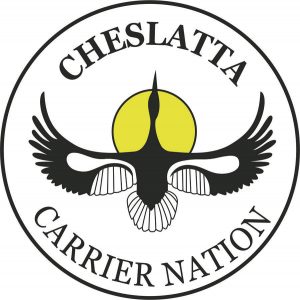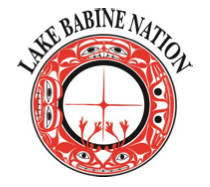I didn’t know anything about this region prior to my Free Inquiry – I didn’t even know the region was called Nechako. It’s interesting for me to learn how many Indigenous communities are invested in oil, mining and forestry ventures. Living in Victoria, I often only hear about how Indigenous communities are fighting development and the pipeline. This is not the case. Development is an important sources of money and employment for these areas.
First Nations Population: 11,978
Total Population: 39,800
Population % First Nations: 30.1%
While it is the largest development region, encompassing 194,024 square kilometers of land, it is also the least populated; Nechako is home to under 40,000 residents, more than 30% of whom are First Nations.
The land is generally mountainous, with many large lakes and rivers that have sustained a traditional economy and trade system since time immemorial.
The arrival of the colonial economy saw the expansion and commercialization of the natural resources sector, particularly mining and forestry. Today these continue to be the mainstays of the region’s economy. Many companies are actively exploring for minerals in the area, as First Nations seek to ensure that impacts on ecological integrity of the land are minimized, and that developments are sustainable, fair, and profitable for First Nations and all stakeholders. Cattle ranching has also had a prominent place in the regional economy since the first settler populations arrived, with many First Nations also becoming heavily involved in ranching.
Communities within this area:
Cheslatta Carrier Nation
Language: Nedut’en
Reserve Land Area:1402.8 hectares

Interesting facts: Cheslatta co-owns the Burns Lake Native Development Corporation (BLNDC).Cheslatta Carrier Nation has maintained active business operations in forestry, operates a successful canoe paddle manufacturer, and has recently negotiated a partnership with the nearby Huckleberry Mine operated by Imperial Metals.
Daylu Dena Council
Language: Danez_gé’
Lower Post (Daylu), BC, is located on Highway 97, the Alaska Highway, approximately 23 kilometers south-east of Watson Lake, YT
Dease River First Nation operates a store and provides direction to the Dease River Development Corporation which develops contracts with local mining companies and provides jobs for community members.
Dease River
Language Group: Danez_gé’
Reserve Land Area: 80.2 hectares
Dease River First Nation is located 115 kilometers north of Dease Lake, BC.
Lake Babine
Language Group: Nedut’en
Reserve Land Area: 3093.9 hectares

Lake Babine Nation is third largest Aboriginal Band in British Columbia. The Nation has 27 reserve lands with three (3) communities inhabited year round, and two that are inhabited year round from time to time.
Lake Babine Nation boasts 5 beautiful and resource rich communities. The Nation has 3 gas bars, a thriving fishery, shared timber areas, and lakeshore land available for business development and investment opportunities.
Investment in cultural tourism opportunities, retail and service areas, alternative energy and various equipment and construction and maintenance projects are of interest to the Lake Babine Nation at this time.
Nadleh Whuten
Language Group: Dakelh
Reserve Land Area:969 hectares
Nadleh Whuten is located in Northern BC’s “energy corridor,” with multiple proposed pipelines in its traditional territory. It is on the east end of Fraser Lake. It is also involved in Mining (Endako Mine) and Forestry.
Nak’azdli
Language Group: Dakelh
Reserve Land Area:1456 hectares
Nak’azdli Whut’en is a non-treaty First Nation located adjacent to Fort St. James, BC. It has eighteen reserves in total in and around Fort St. James. Most members live on Indian Reserve (IR) #1 which is separated from Fort St. James by Kwah Road.
Nee-Tahi-Buhn
Language Group: Witsuwit’en
Reserve Land Area:719.2 hectares
Nee Tahi Buhn Band is an independent band.The Nee Tahi Buhn Band is part of the Athapaskan language family.
Nee Tahi Buhn has signed a community and economic development agreement with the Province of BC (2014). It also operates a forestry business, and has engaged with natural gas proponents operating in its traditional territory
Saik’uz First Nation
Language Group: Dakelh
Reserve Land Area:3235.7 hectares
Saikuz First Nation is a Dalkeh Community in Central British Columbia. It’s name is derived from the Dalkeh (Carrier) word “on the sand” and refers to the sandy soil on which the main community, IR 1 is located on the east end of Nulki Lake, 14 km south of Vanderhoof, BC
SFN currently operates two businesses, Tin Toh Forest Products Ltd., and SFN Catering, It manages its own fisheries, and, through its Natural Resources department, is enaged with the proponents of industrial projects in its traditional territory including: Pacific Northern Gas, TransCanada, Innergex Renewable Energy, and NewGold.
Skin Tyee
Language Group: Witsuwit’en
Reserve Land Area:396.6 hectares
The Skin Tyee band is a smal First Nation located in the central interior of British Columbia near Francois Lake, west of Prince George.
The Skin Tyee band has engaged with Natural Gas proponents of projects in its traditional territory, including Coastal GasLink and the Pacific Trails Pipeline.
Stellat’en First Nation
Language Group: Dakelh
Reserve Land Area:851 hectares
Stellat’en traditional territory is located 160 km west of Price George on the fertile glacial basin between Fraser Lake and Vanderhoof. It is governed by a chief and two councillors
Takla Lake First Nation
Language Group: Dakelh Nedut’en
Reserve Land Area:809 hectares
Takla Lake Nation is a First Nation located around Takla Lake, 400 km north of Prince George. The territory is a rich environment of lakes, rivers, forests and mountains, bordered on the west by the Skeena Mountains and on the east by the Rocky Mountains.
Takla Lake operates its businesses through the Takla Development Corporation, which seeks to benefit the Takla Lake First Nation’s membership through interests in logging, fuel, construction, tourism, retail, real estate and other ventures.
Taku River Tlingit
Language Group: Łingít
Reserve Land Area:1263.9 hectares
The Taku River Tlingit First Nation is located in Atlin, BC, a small remote community of approximately 400 people.
Taku River Tlingit owns a development corporation called the Atlin Tlingit Economic Limited Partnership (ATELP) which manages the nations business affairs
Tl’azt’en Nation
Language Group: Dakelh
Reserve Land Area:2786.1 hectares
Our people still live off the land and we hunt for moose, deer, bear, caribou, mountain goats, and small fur-bearing animals. We set nets for salmon, white fish, trout, kokanee, spring salmon, and lingcod. We still go to our camp grounds in the summer time and gather food for our winter storage. We are open to development opportunities that do not compromise our traditional values.
Tl’azt’en is a First Nation located in the Stuart Lake area north of Fort St. James, whose people are spread across its four main communities
Tl’azt’en Nation has an active sustainable fisheries program which focuses on careful research and monitoring. It also operates the John Prince Research Forest, a natural resource research and education facility which it jointly owns with the University of Northern British Columbia
Ts’il Kaz Koh (Burns Lake)
Language Group: Dakelh Witsuwit’en
Reserve Land Area:185 hectares
Small First Nations community located in Burns Lake, BC.
Has engaged in Agreements regarding the the Pacific Trails and Coastal GasLink Pipeline projects.
Wet’suwet’en
Language Group: Dakelh Witsuwit’en
Reserve Land Area:650 hectares
The Wet’suwet’en First Nation is located west of Burns Lake in the central interior of British Columbia. It was formerly known as the Broman Lake Indian Band and is still usually referred to as Broman Lake.
Has engaged in Agreements regarding the Coastal GasLink and Pacific Trails Pipeline projects.
Yekooche
Language Group: Dakelh
Reserve Land Area:3225.5 hectares
The Yekooche First Nation is located in a rich area encompassing the Skeena and Fraser watersheds, about 85 km northwest of Fort St. James and comprises of 4 reserves.